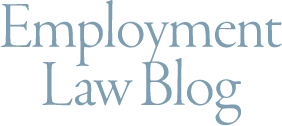As a result of the COVID-19 pandemic, many employers are allowing employees to continue to work from home some or all of the workweek. Employers who choose to do so need to be mindful of the U.S. Department of Labor’s continuous workday rule.
The continuous workday rule was implemented in 1947 and generally provides that all time between an employee’s first and last work activity of the day is compensable working time. With limited exceptions, such as for unpaid meal periods and breaks, this means that employees must be compensated for the entire workday, including any periods during which they perform no work.
In April of 2020, in response to the COVID-19 pandemic and the enactment of the Families First Coronavirus Response Act (FFCRA), the DOL suspended the continuous workday rule for employees working from home for COVID-19-related reasons. The FFCRA entitled employees to paid leave in certain situations related to COVID-19, such as when employees were unable to work because of a government-issued quarantine or isolation order. To avoid triggering this mandatory paid leave, the FFCRA and the DOL encouraged work-from-home arrangements that would allow employees to continue working while having to quarantine and/or mind children when schools were closed or on a virtual school schedule. Mindful that these remote work arrangements would result in employees potentially working outside of their normal work schedule, and that applying the continuous workday rule under those circumstances would deter employers from allowing employees to work from home, the DOL took the position that the rule did not apply to employees working from home for COVID-19-related reasons.
Unfortunately, the temporary suspension of the continuous workday rule expired on December 31, 2020. This means that if an employer chooses to continue allowing employees to work remotely, then those employees are again subject to the continuous workday rule.




